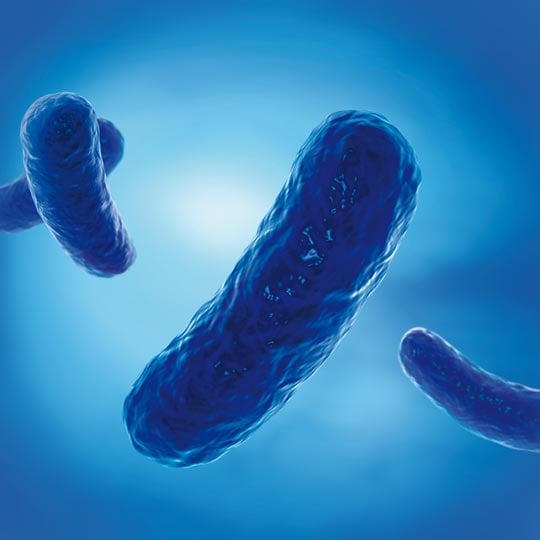Escherichia coli is a facultative anaerobic, Gram-negative, motile, rod-shaped bacterium. It belongs to the Enterobacteriaceae family.
Due to the different virulence factors, the infections are roughly divided into two group
- Intestinal Escherichia coli infections:The four most important pathovars (bacterial strains of the same species with the same characteristics but different pathogenicity):
- Entheropathogenic E. coli (EPEC): causes infant diarrhoea, often with fatal outcome in developing countries
- Enterotoxigenic E coli (ETEC): profuse watery diarrhoea, bacteria are toxic and adhere to small intestine enterocytes
- Enteroinvasive E. coli (EIEC): is able to penetrate the colon's mucous membrane and causes ulcerous inflammations
- Enterohaemorrhagic E. coli (EHEC): cause of haemorrhagic colitis and haemolytic uremic syndrome (HUS), may lead to acute kidney failure and thrombocytopenia (reduced platelet count)
- Enteroaggregative E. coli (EAEC): causes particularly acute and persistent diarrhoea (especially in children); in adults often associated with extraintestinal infections
- Diffusely adhering E. coli (DAEC): elicits diarrhoea particularly in children but also in hospitalised patients
- Extraintestinal Escherichia coli infections:
These infections result from a relocation of coliform bacteria of the own flora to places of the macroorganism where they are not supposed to be, but where the conditions are favourable for their proliferation.
Typical infections are: Catheter-associated urinary tract infection and sepsis respectively.
In recent years, the share of ampicillin-resistant strains has increased. Occurrences of resistances to other antibiotics such as fluoroquinolones (e.g. ciprofloxacin, levofloxacin, moxifloxacin) are also trending up. Additionally, there is an increase in ESBL-producing strains (ESBL = extended-spectrum beta-lactamase). Beta-lactamases as well lead to decreased susceptibility to third-generation cephalosporins having a broad spectrum of activity.
The main transmission path is direct or indirect contact with contaminated persons or objects.
» Necessary spectrum of antimicrobial activity
Bactericidal
Click here to find products with bactericidal activity.

